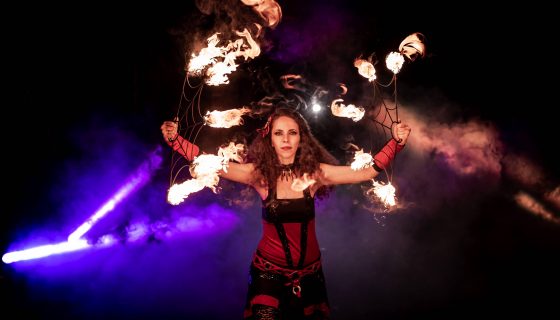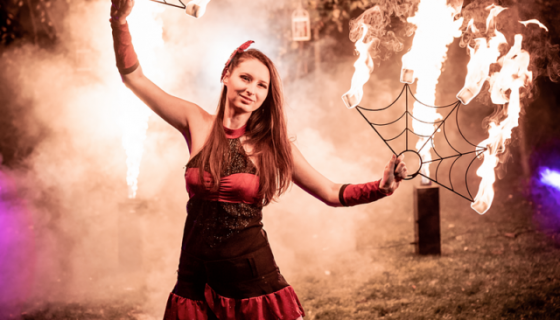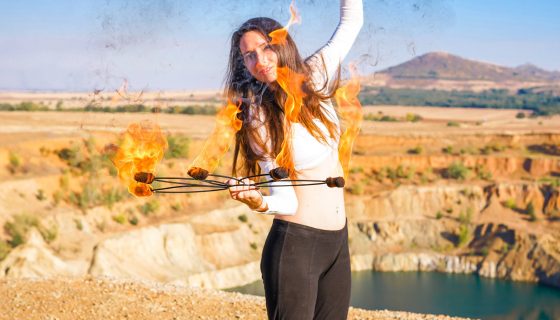Spinning fire is amazing with the perfect fans.
You can order fire fansi for spinning here – https://theworldoffire.etsy.com
🔥 More about The World Of Fire fans
🔥 The fans are made of steel and they are welded. The wicks are attached with screw so even after long use, they are stick to the frame without the possibility to fall out. The fans have been constructed to have great balance while spinning. The size and the weight is calculated, so they are easier to use for different kind of tricks. It most of the models has slightly thicker outer edge spokes for protection and strength and light wicks in the muddle, so they are easier to use.
🔥 Always inspect your fire prop before spinning. Keep eye on it for better safety and use proper fuel for spinning and soak them well, so the
Kevlar can have longer life. The world of fire fans are designed to be both lightweight and durable, but they are not indestructible. The fans are made of steel that rather bends than brakes, but repeated dropping its not recommended. Take care of your fire fans by improving your ability to hold them in your hands, before start learning additional fire tricks. The grip of the fans is Russian grips style and to never drop them, use to hold your fire fans on the palms of your hands and open wide your fingers. If you do it right, your fingers are going to prevent the fan to fly away. They are made with lots of love and care and if you take your time to think about how to hold them, they will be your favorite fire prop for long, long time. Thank you very much for your care.


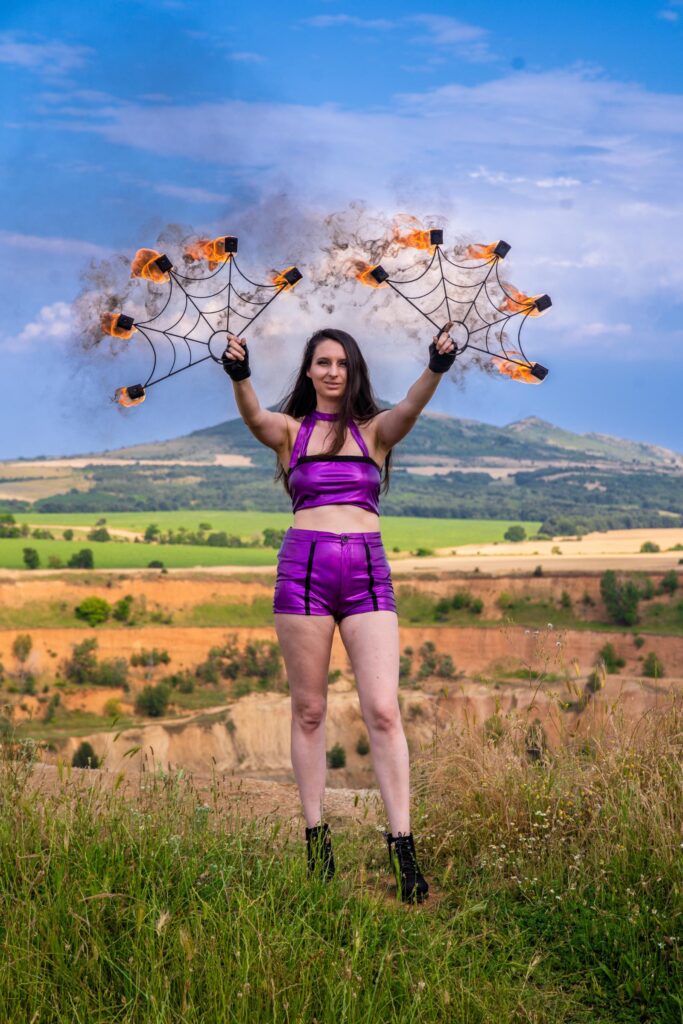

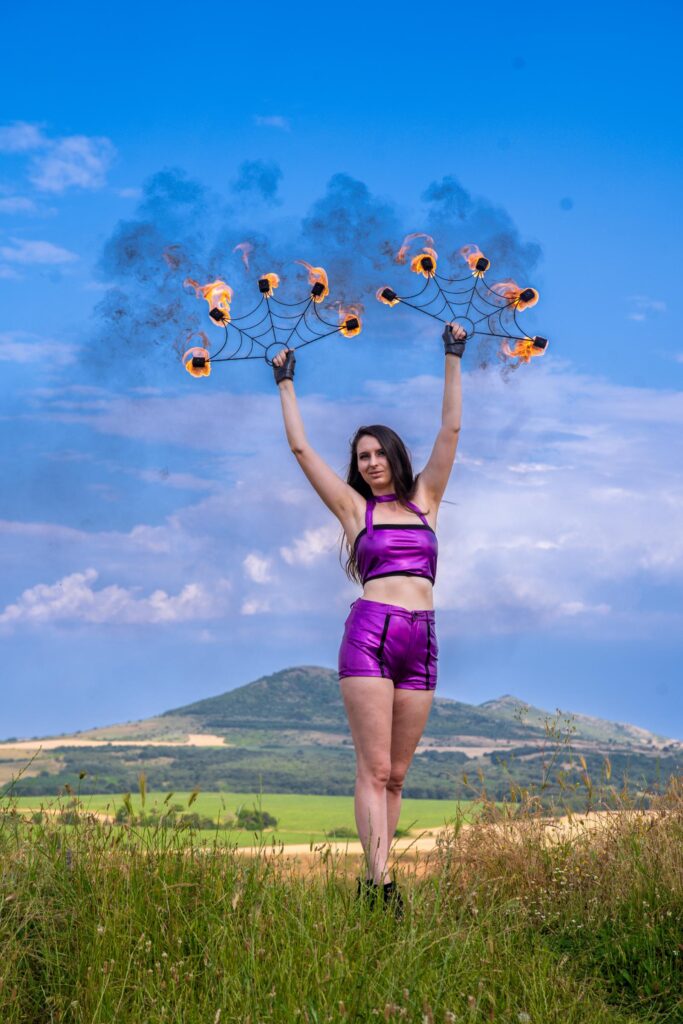

Fire fans are a mesmerizing embodiment of grace and danger, an enchanting display of movement and element. These specialized performance props, typically crafted from metal or other fire-resistant materials, are designed to hold and manipulate open flames. When wielded skillfully, transform into dazzling extensions of the performer’s body, painting the night sky with their fiery choreography.
At first glance, fire fans resemble elegant handheld accessories, their intricately designed frames often reminiscent of feathers or leaves. Each fan consists of a series of spokes that radiate from a central handle, forming a semi-circular or circular shape. Affixed to these spokes are wicks, which are soaked in flammable liquid and ignited, casting a radiant glow and dancing flames.
The essence of fire fan performance lies in the fluidity of movement. Performers wield their fans with precision, combining sweeping arcs, delicate twirls, and intricate patterns to create a visually stunning spectacle. The flames seem to respond to the performer’s every command, flickering and swirling as they navigate the space. The juxtaposition of controlled motion and untamed fire evokes a sense of awe and excitement, drawing spectators into a trance-like state.
While hold an innate allure, their mastery demands dedication and practice. Performers must be well-versed not only in the art of fire dancing but also in the unique techniques required to manipulate these specialized props. Safety measures are paramount, with performers often wearing fire-resistant clothing and taking precautions to prevent accidents.
Fire fan performances are a common feature in fire shows, circus acts, and festivals celebrating flow arts. Whether against a backdrop of starlit night or within the confines of a bustling event, illuminate the darkness, leaving an indelible mark on the memories of those fortunate enough to witness their breathtaking display.
In the hands of a skilled performer, fire fans transcend mere objects, becoming instruments of storytelling and emotion. They speak a language of flickering flames and swirling air, telling tales of daring, beauty, and the delicate balance between humanity and the elements.
Please note that fire performance can be extremely dangerous and should only be attempted by experienced individuals who are well-trained in fire safety and have a thorough understanding of the risks involved.
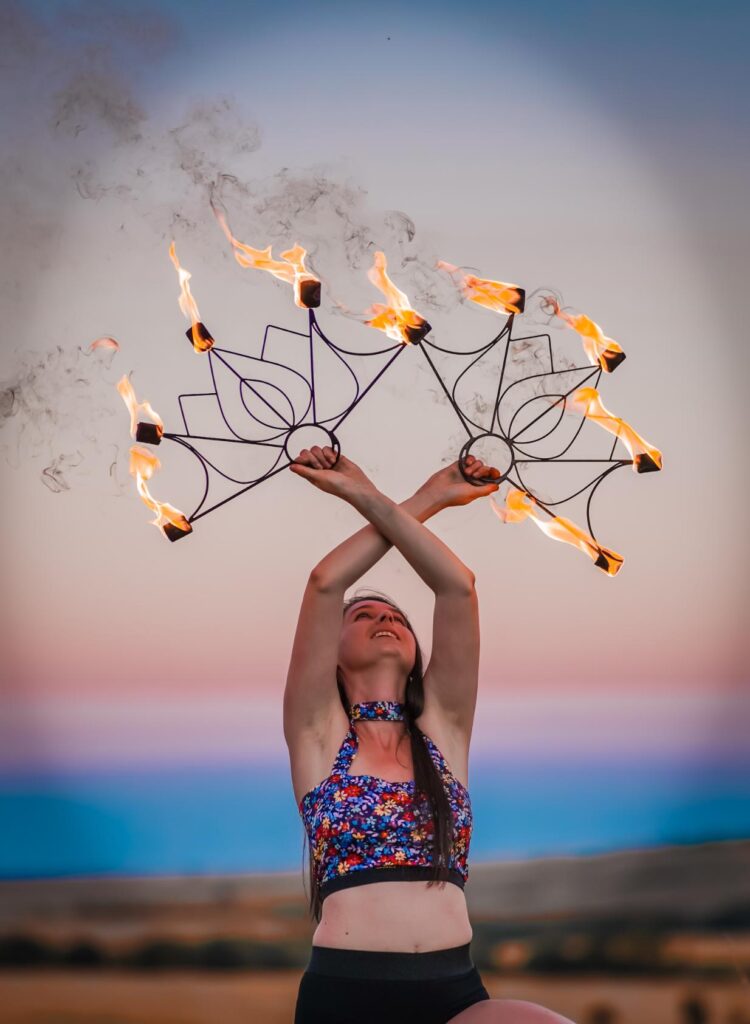
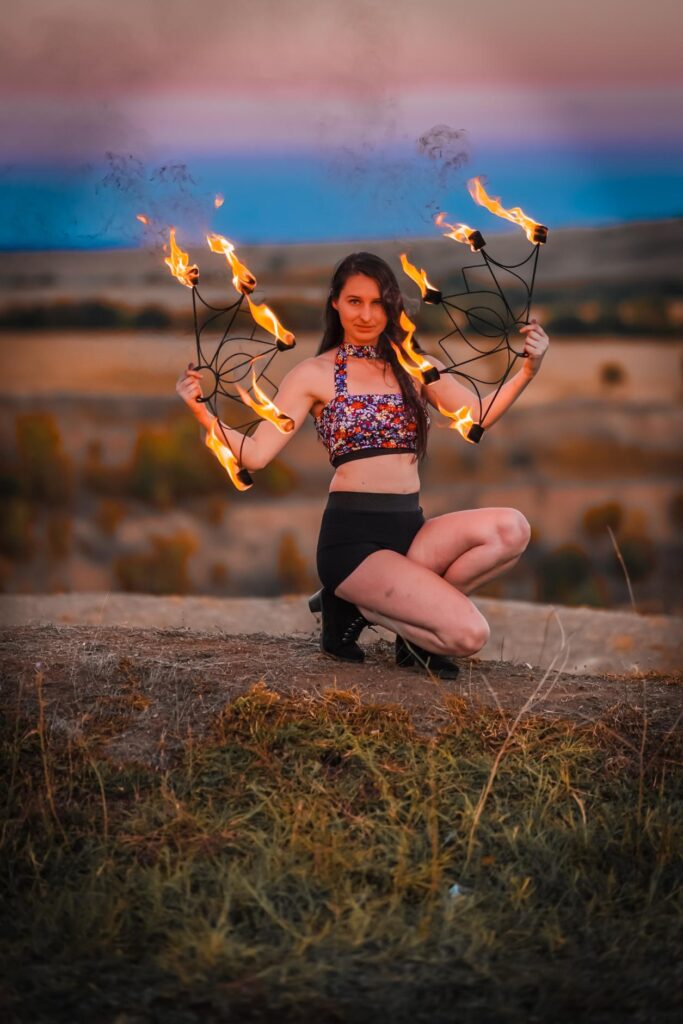

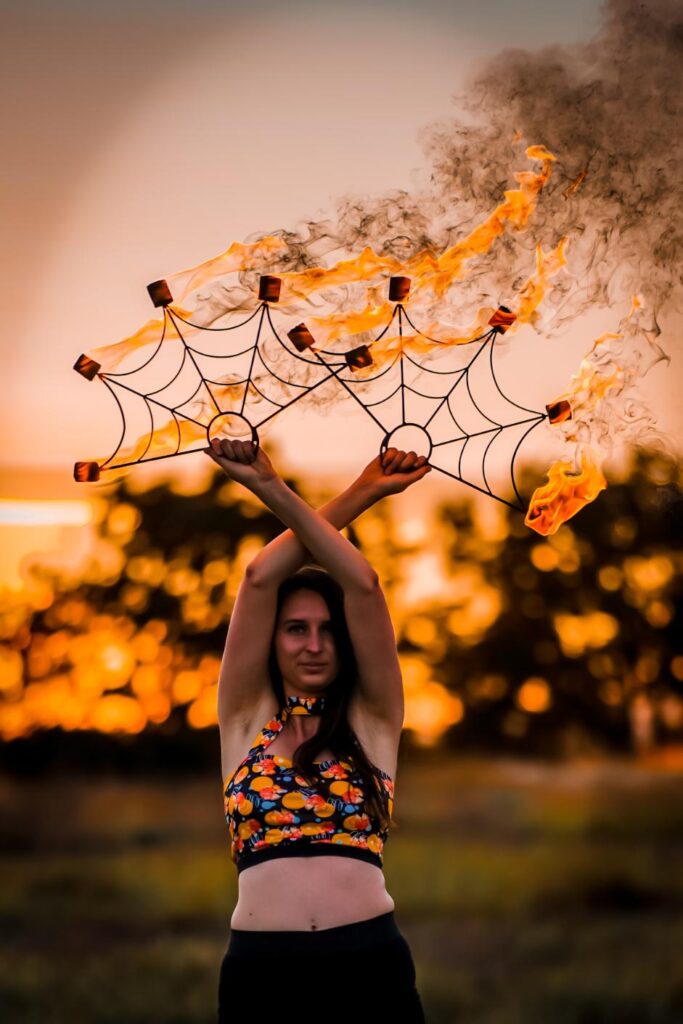
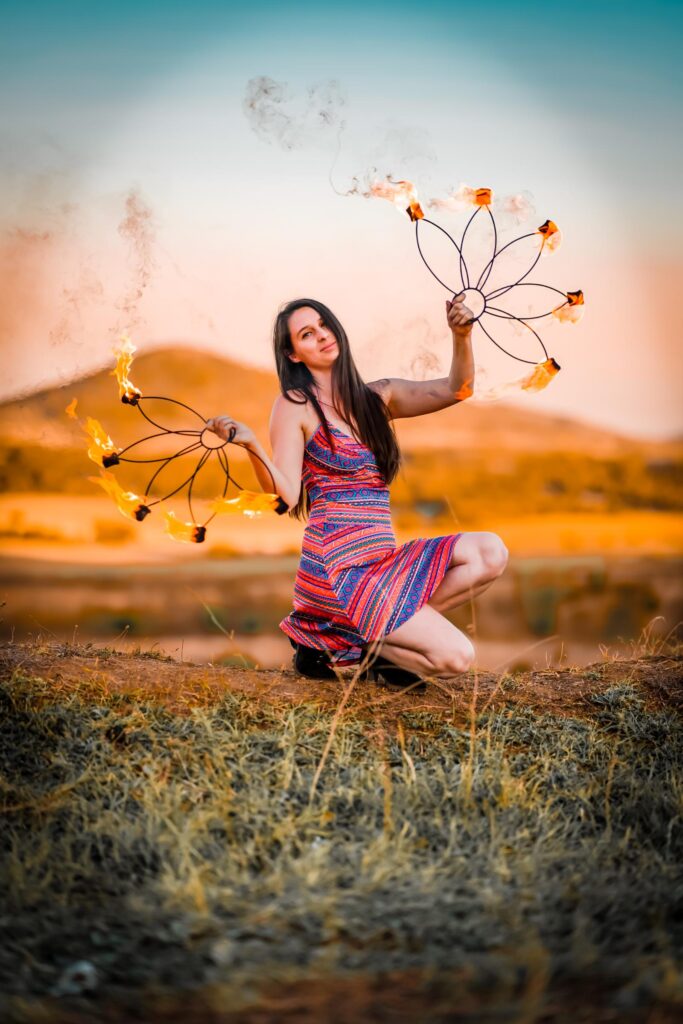

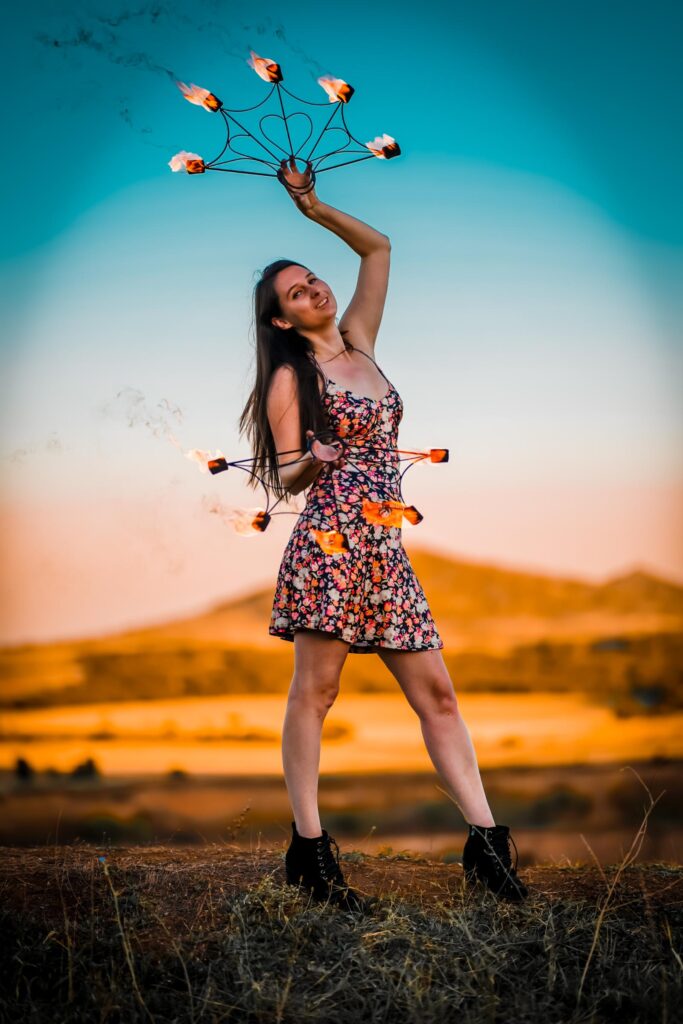

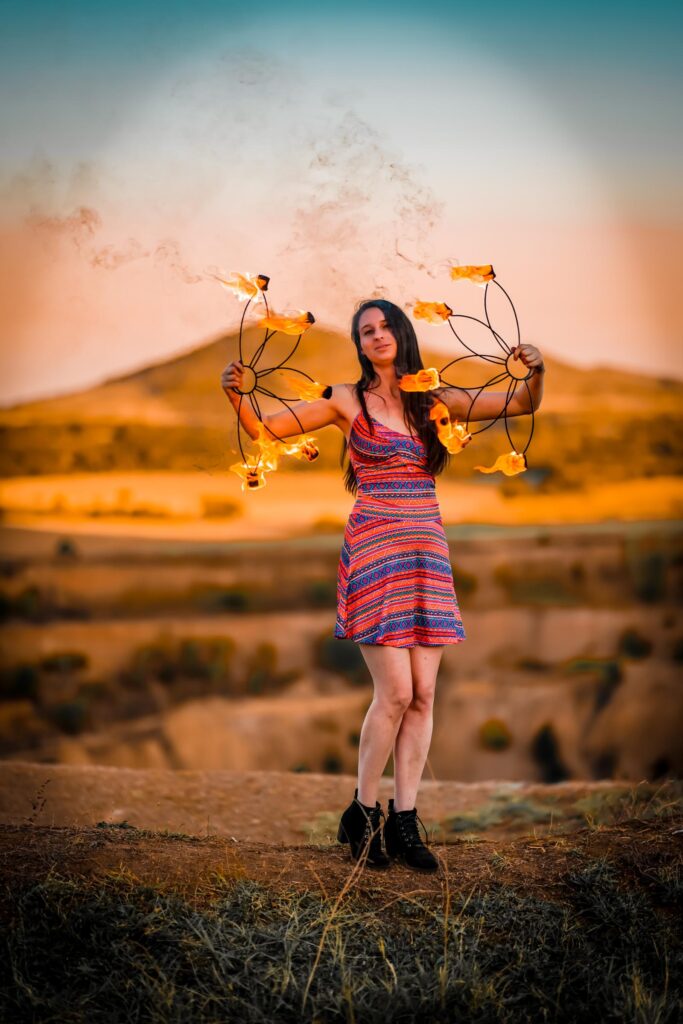
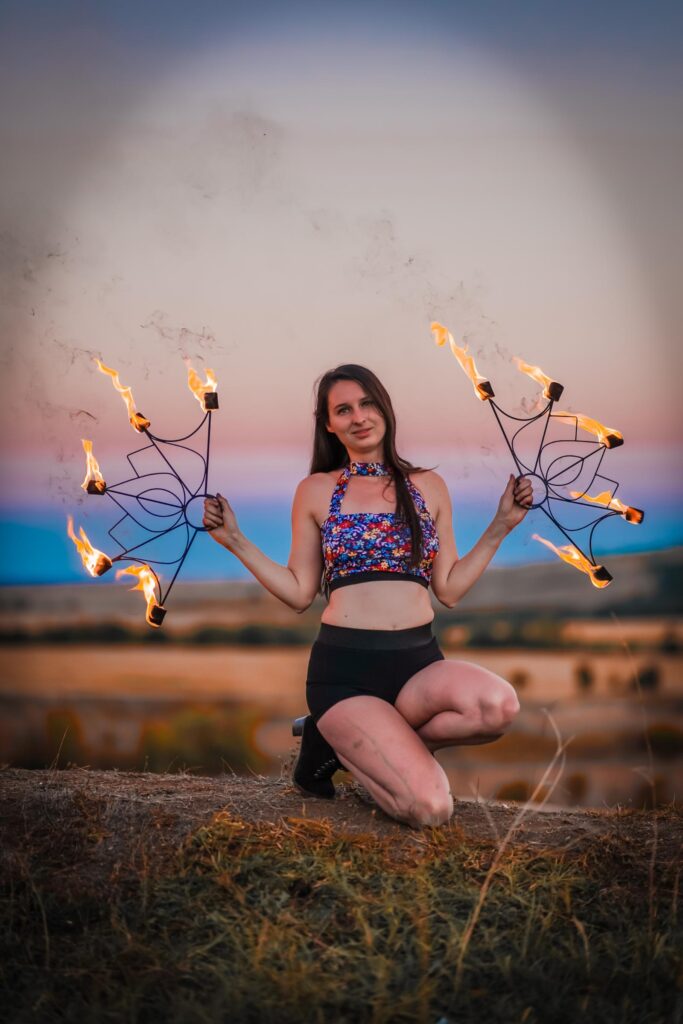
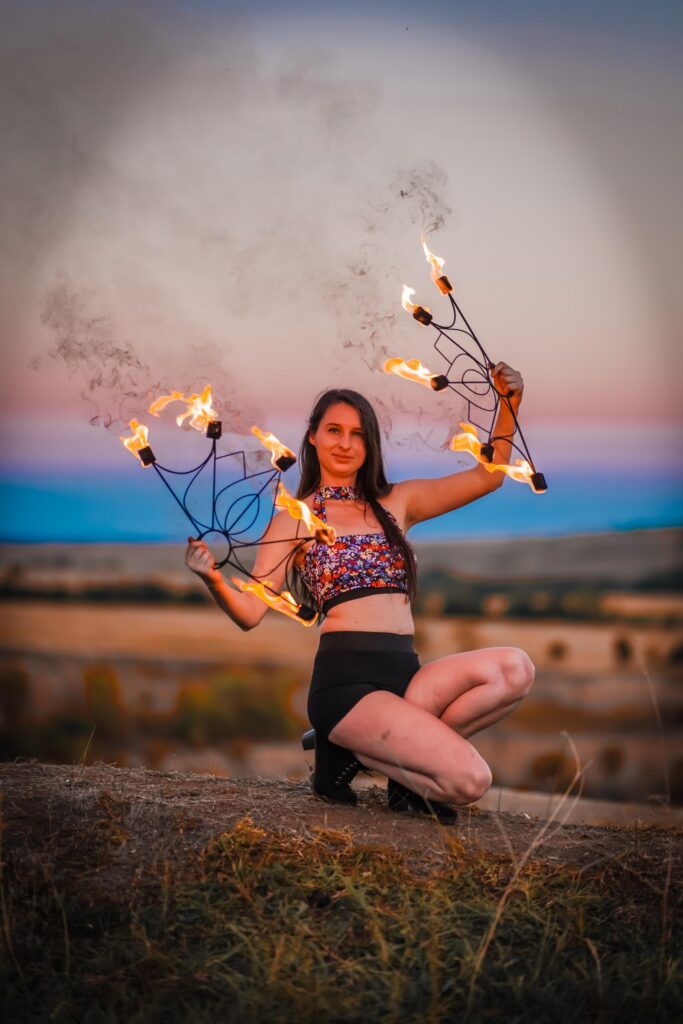
Are you a beginner in fire fans spinning?
Here are some insides:
If you’re a beginner with fire fans, there are several steps you should take to ensure your safety and progression in learning this skill. Fire performance involves inherent risks, so it’s essential to approach it responsibly. Here’s what you can do:
- Seek Professional Instruction: Enroll in workshops or classes led by experienced fire fan performers. They can provide guidance on proper techniques, safety protocols, and the basics of fire performance.
- Learn Basic Techniques: Start with fundamental movements and techniques. Practice without fire first to get comfortable with fan manipulation. Focus on spins, weaves, figure eights, and other basic patterns.
- Understand Fire Safety: Before incorporating fire, thoroughly educate yourself about fire safety. Learn how to properly fuel and light your fans, as well as how to extinguish them safely. Understand the importance of having safety equipment, like a fire blanket and extinguisher, nearby.
- Choose the Right Fuel: Select a recommended fuel for fire fans, such as lamp oil or white gas. Avoid using flammable liquids like gasoline. Understand how to soak the wicks properly and maintain a safe burn time.
- Practice Fire Safety Gear: Invest in appropriate fire safety gear. This includes fire-resistant clothing, non-slip shoes, and safety equipment like fire-resistant gloves.
- Perform in a Controlled Environment: Initially, perform in a controlled and fire-safe environment. This could be an open space with minimal wind and no flammable objects nearby. Consider joining a fire performance community that offers safe spaces for practice.
- Stay Sober: Never perform with while under the influence of alcohol or drugs. Fire performance requires clear focus and coordination.
- Have a Spotter: If possible, have a trained spotter or experienced fire performer present while you practice. They can provide assistance if anything goes wrong.
- Start Small: Begin with short burn times and small flames. As you gain confidence and skill, you can gradually increase the size and complexity of your fire performances.
- Record Yourself: Record your practice sessions and performances to review and identify areas for improvement. It’s a helpful way to track your progress and refine your techniques.
- Stay Patient: Fire fan manipulation takes time to master. Don’t rush the learning process. Gradually build your skill and confidence over time.
- Attend Fire Jams and Events: Participate in fire jams or gatherings where fire performers come together to practice and share skills. This is a great opportunity to learn from others and receive constructive feedback.
- Prioritize Safety: Always prioritize safety over flashy moves. Remember that safety measures are non-negotiable in fire performance.
- Know Your Limits: As a beginner, know your limits and don’t attempt advanced tricks or moves until you have built a solid foundation of skill and confidence.
Remember that fire performance is a serious skill that requires dedication, practice, and respect for safety guidelines. Be patient, take your time to learn, and always prioritize your safety and the safety of those around you.

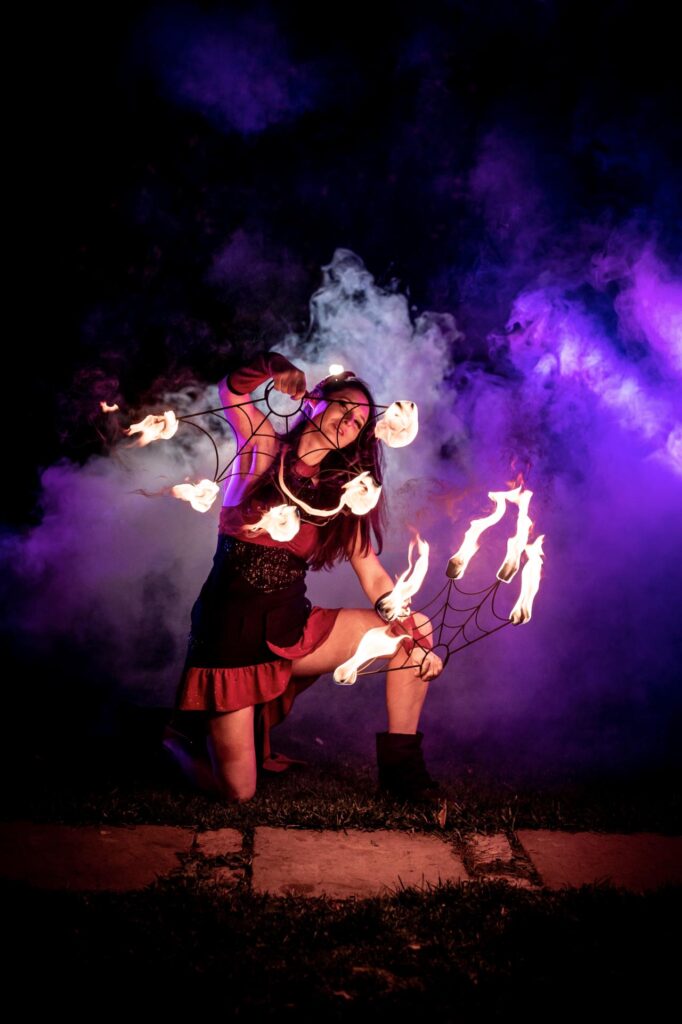







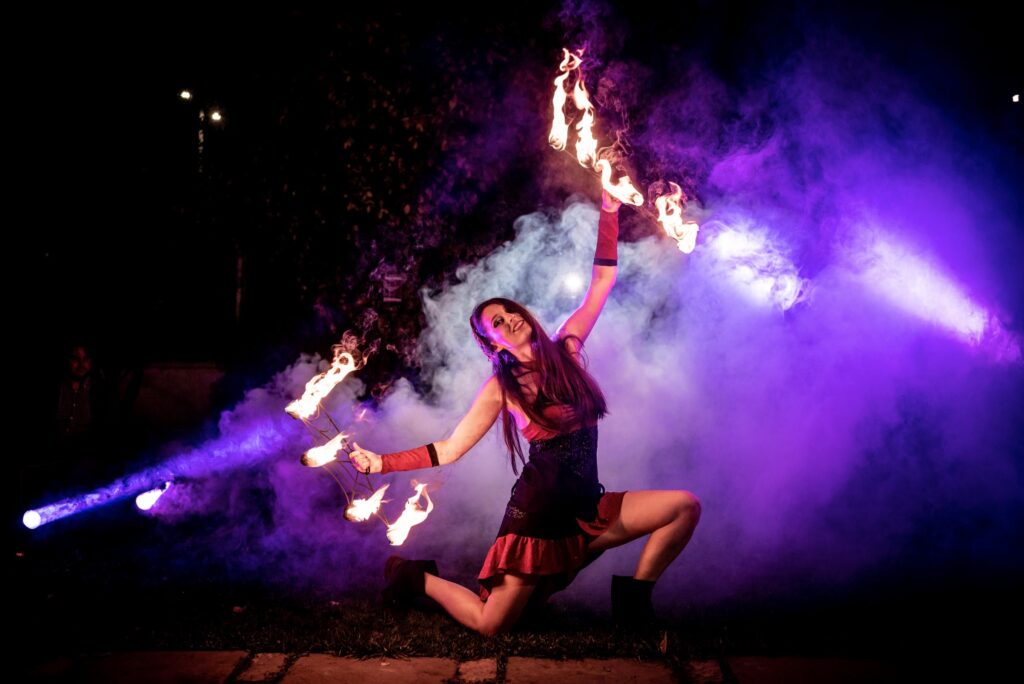
Spinning fire fans is a captivating and exhilarating experience that elicits a wide range of emotions and sensations among performers. Here are some common feelings that people often describe when they spin :
- Adrenaline Rush: The combination of fire, movement, and danger can lead to a surge of adrenaline. The controlled risk involved in fire performance can create an exciting and exhilarating feeling.
- Empowerment: Mastering fire fan techniques and performing with confidence can instill a strong sense of empowerment. The ability to manipulate fire safely is a skill that few possess, and this accomplishment can boost self-esteem.
- Connection to Elements: Spinning creates a unique connection to the elements. The warmth of the flames and the dancing fire can evoke a deep appreciation for the natural world.
- Euphoria: The visual spectacle of spinning fans, combined with the rhythmic movement, can induce a state of euphoria. Performers often describe feeling a sense of joy and elation during their performances.
- Focus and Flow: fan spinning requires intense focus and concentration. Many performers enter a state of flow, where they become completely absorbed in the moment and lose track of time.
- Mindfulness: Similar to other flow arts, fire fan spinning encourages mindfulness. Performers become attuned to their body, movements, and the sensations of fire, leading to a heightened state of presence.
- Creative Expression: fan spinning is a form of artistic expression. Performers have the opportunity to tell stories, convey emotions, and express themselves through their movements and choreography.
- Catharsis: Spinning fans can be a form of emotional release. The intense focus required during the performance can provide a temporary escape from daily stresses and worries.
- Community and Connection: Many fan spinners are part of a community of fire performers. The shared experiences, camaraderie, and mutual support create a strong sense of connection and belonging.
- Nervous Excitement: While exhilarating, there can also be nervousness before performing with . The excitement of sharing your skill with an audience, coupled with the responsibility of fire safety, can create a mix of emotions.
- Transcendence: Some performers describe feeling a sense of transcendence or a connection to something greater than themselves when they are fully immersed in their fire fan routine.
- Respect for Fire: Spinning often deepens a performer’s respect for fire and its power. This respect can lead to a heightened sense of responsibility and caution when working with fire.
It’s important to note that fire performance involves risk and should only be undertaken by those who are properly trained and adhere to strict safety protocols. The intense emotions and sensations associated with fire fan spinning make it a truly unique and transformative experience for many performers.
Check our article for flag poi – https://lilyyofire.com/flag-poi/
In the world of fire fan spinning, a captivating romance unfolds, as the performer becomes the enchantress, and the fire fans, her ardent companions. This dance of passion and artistry takes place under the mesmerizing embrace of the night sky, weaving a love story that resonates with the deepest chambers of the heart.
With each graceful sweep and elegant flourish, fire fans come alive like fervent lovers, their flames casting a warm and intimate glow. The fiery performance is a symphony of warmth and sensuality, a mesmerizing waltz that forges a deep connection between the dancer and the elemental force of fire.
As the artist’s body melds with the , they become extensions of her very being, responding to her every intention and emotion. In their fiery embrace, she discovers an intimate connection to nature’s most primal force, transcending the mundane and stepping into a realm of boundless possibilities.
The language of the dance is one of yearning and vulnerability, as the flames whisper tales of love and longing. The performer’s movements, filled with grace and intensity, mirror the timeless dance of desire, where the push and pull of emotion weaves a story of ardor and surrender.
Amid the darkness, the intimate connection between the dancer and her fire fans takes center stage, creating an atmosphere of enchantment and closeness. This fiery love affair becomes a visual sonnet, a story told through the language of flickering flames and passionate twirls.
The rhythm of the dance echoes the beating heart, inviting us to lose ourselves in the sensual tapestry of light and motion. It’s a journey that transcends the ordinary, a dance that beckons us to explore the depths of our emotions and the beauty of human expression.
Fire fan spinning, in all its romantic splendor, is a testament to the human spirit’s eternal quest for connection and artistry. As the fans twirl and the flames sway, they leave an indelible mark on the heart, a memory of a love story between the performer and the elemental magic of fire that lingers long after the dance has ended.


